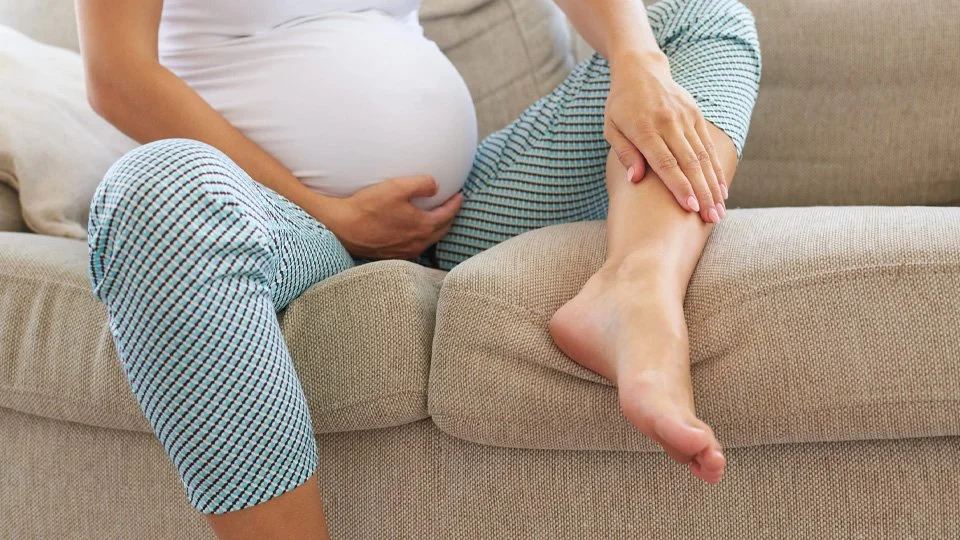Varicose Veins in Pregnancy
Varicose Veins in Pregnancy
During their pregnancy, more than 40% of women have some form of issue with varicose veins in their legs and/or vulva. It is also a fairly prevalent problem since spider veins, thread veins, and damaged veins frequently appear in the legs.


Varicose vein appearance during pregnancy
Pregnancy-related varicose veins can develop in awkward locations. They can develop in the vagina, vulva/labia, and on the leg in addition to other places. The final 13 weeks of the third trimester are often when these varicose veins worsen. Large, bloated varicose veins, purple spider veins, and thread veins may appear in the leg regions during this period.
It has been discovered that a woman’s risk of developing varicose veins increases with the number of pregnancies she has. For this reason, varicose veins may become more apparent in a third pregnancy than in a first, when they might not have been noticeable at all.
Signs and symptoms
In addition to being ugly, these veins can cause extreme agony and tenderness, and at the end of the day, legs may feel especially heavy.
Blood clots may form, and the varicose veins may occasionally become hard, red, and sensitive. We call this thrombophlebitis. You must get immediate medical attention if you encounter these symptoms while pregnant.
Reasons
Pregnancy-related varicose veins are mostly caused by the sex hormones of women. A woman’s body will alter significantly during her pregnancy. The body might change due to fluctuations in hormone levels, one of which is an increase in progesterone.
Vein edema may result from blood vessel relaxation brought on by an increase in progesterone. Additionally, spider veins, thread veins, and damaged veins can all be directly caused by female sex hormones.
You are more likely to acquire varicose veins if there is a family history of them. Additionally, patients who have varicose veins during their first pregnancy are more likely to have them in stronger form throughout subsequent pregnancies since they tend to worsen with each pregnancy.
Pregnancy causes the body to produce more blood, which puts additional strain on veins. The pelvic main veins experience pressure from the growing uterus. The major vein on the right side of the body, known as the inferior vena cava, experiences increased pressure as a result of this pressure. All of this may press against the veins in the legs and cause varicose veins.
Don’t let vein issues affect your life.
Book a call with us
During pregnancy, how to take care of your legs and varicose veins
Everyone has heard pregnant women advised to raise their legs, but they may not realize that this is a wonderful way to treat varicose veins since it relieves pressure on the veins.
It is recommended that women aim to begin their pregnancies at a healthy weight and continue eating healthily for the duration of the pregnancy. Using compression hose, such as class 2 support tights or stockings, can also help lessen the amount of varicose veins that develop.
The good news is that once the baby is born, varicose veins typically go away and get better three or four months later.
Following that, patients should talk with their doctor about additional therapy if the veins are still noticeable.
We provide customized treatment for varicose veins during pregnancy at the Vein & Foot Varicose Vein Centre. This might range from small thread veins to varicose veins in the legs and vagina. Our highly skilled team, which consists of interventional radiologists, vascular scientists, and vascular surgeons, performs all procedures.
Treatments for Varicose Veins in Pregnancy
Pregnancy Varicose Vein Treatments
- The treatments must be personalized for each unique patient. This ensures the doctor can provide the most effective care, tailored to individual needs, leading to the best possible outcomes for every patient.
Vein Check-up
- At the Vein and Foot Clinic, we offer an early detection service for the potential risk of developing thread veins, varicose veins, pelvic varicose veins, and deep vein thrombosis (DVT).
Conditions We Treat
- Varicose veins
- Superficial Venous Thrombosis Phlebitis
- Thread / spider veins
- Swollen leg
- Deep vein thrombosis (DVT)
- May turners syndrome
- Varicose veins in pregnancy
- Varicose veins in obese patients
- Restless leg syndrome
- Varicose veins of the testicles
- Recurrent Varicose Veins
- Hidden Varicose Veins
- Hemosiderin Brown Stains
- Lipo dermatosclerosis (LDS)
- Venous Eczema
- Leg Ulcers
- Vaginal and Vulval Varicose Veins
- Pelvic Congestion Syndrome (PCS)

